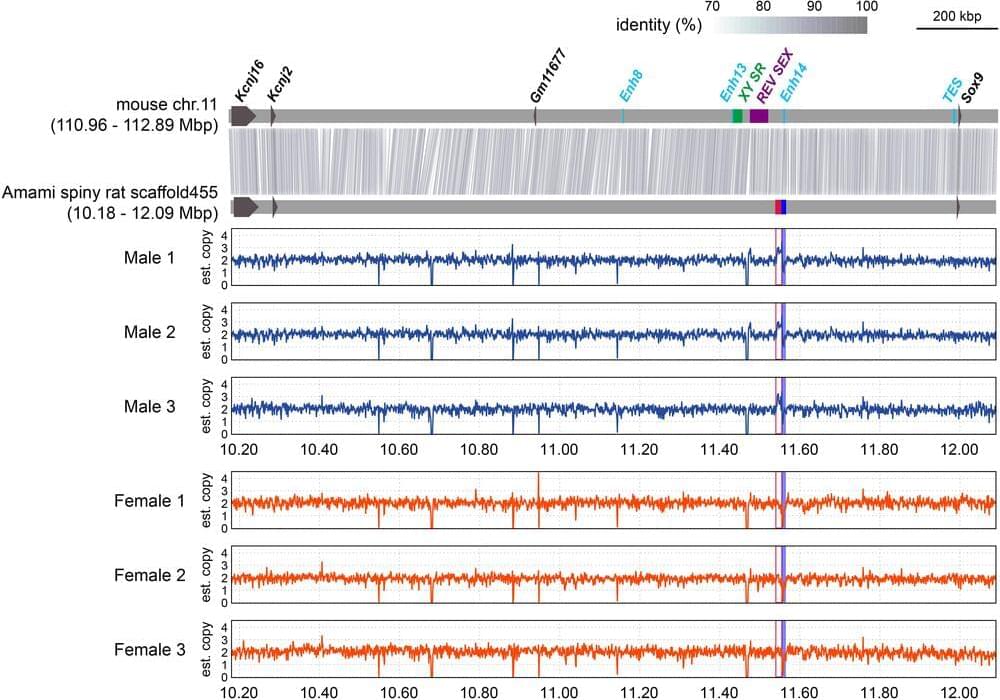Mammalian sex chromosomes are highly conserved, and sex is determined by SRY on the Y chromosome. Two exceptional rodent groups in which some species lack a Y chromosome and Sry offer insights into how novel sex genes can arise and replace Sry, leading to sex chromosome turnover. However, intensive study over three decades has failed to reveal the identity of novel sex genes in either of these lineages. We here report our discovery of a male-specific duplication of an enhancer of Sox9 in the Amami spiny rat Tokudaia osimensis, in which males and females have only a single X chromosome (XO/XO) and the Y chromosome and Sry are completely lost. We performed a comprehensive survey to detect sex-specific genomic regions in the spiny rat. Sex-related genomic differences were limited to a male-specific duplication of a 17-kb unit located 430 kb upstream of Sox9 on an autosome. Hi-C analysis using male spiny rat cells showed the duplicated region has potential chromatin interaction with Sox9. The duplicated unit harbored a 1,262-bp element homologous to mouse enhancer 14 (Enh14), a candidate Sox9 enhancer that is functionally redundant in mice. Transgenic reporter mice showed that the spiny rat Enh14 can function as an embryonic testis enhancer in mice. Embryonic gonads of XX mice in which Enh14 was replaced by the duplicated spiny rat Enh14 showed increased Sox9 expression and decreased Foxl2 expression. We propose that male-specific duplication of this Sox9 enhancer substituted for Sry function, defining a novel Y chromosome in the spiny rat.
